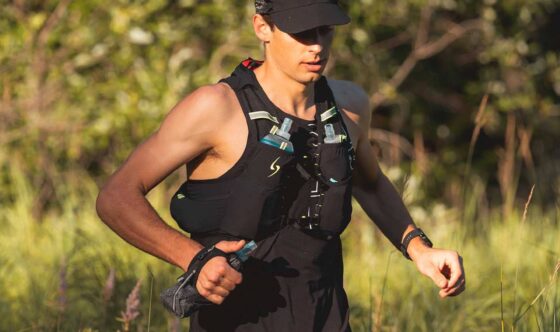How to prevent running injuries
25-10-2021 | RunningRunning is a sport accessible to everyone, but you need to know how to practice it safely. Injuries can happen and ruin your season if you are not careful. Because every runner is different, there is not a miracle type of training that will keep 100% of the injuries away. However, by being attentive to your body and by noting the effects of your run, you can, most of the time, prevent them.
First step: Recognize the risk factors
There are multiple causes of injuries and they are not the same for all runners. However, there are risk factors that are common to everyone.
Volume augmentation
New runners should be especially mindful of this aspect. If the first few weeks of trainings are going well, the thought of increasing your weekly milage will surely make its way into your mind. Be careful not to fall into the trap. Even if you feel confident and comfortable, keep taking your time and gradually increasing your milage. Your body needs time to adapt to the mechanical constraints and to strengthen the necessary muscles.
A 10% increase in running volume per week should not cause injury. However, pay attention to your body’s signals. For some runners, this augmentation is too fast and they will need more time to adjust. Remember that the most important is not to be the first to progress, but to get to your goal in good physical condition.
Rest time
Injuries can also happen when your body does not have enough time to rest between two trainings. During a run, your muscles are working and, if you ask them for an intense effort too quickly, the tissues will not have enough time to fully repair themselves. Your next run will only cause more harm. For every new training without enough rest time, your muscles will be more and more damaged.
Shoes
As the weeks go by, your shoes will get worn out: it is normal! The lifespan of a pair of running shoes is usually around 800 kilometers. But do not wait until they get to that point to inspect them. Depending on your stride, the type of surface you are running on or your weight, it is possible that your shoes wear out before or after this distance. Even if they were perfectly adapted to you when you bought them, they could start causing problems if you do not change them quickly enough. Pay attention frequently to the changes on the insole and outsole, as well as to the fabric to prevent an injury that could have easily been avoided.
Running posture
Also pay attention to your posture when you run. Do you feel pain in your back, your shoulders? If you already listen to the advices mentioned above and feel the beginning of an injury, it might be caused by your posture. You should run in a position that makes you comfortable, but an expert could help you find one that will be appropriate for you. The topic will be discussed in more depth later in this article.
Prevent injuries
Avoiding risky situations is not the only step to prevent running injuries. Many other things can lower your chances of getting hurt.
Adding strength training
Here, it is not about muscular gain. It is mainly about strengthening the muscles that allow you to have better control and a more stable posture. Prioritize the abdominals and lower legs, which are the most used groups for maintaining a good running posture. Increasing the strength of these muscles will help your body have a better response to the impacts caused by your strides.
Finding the right shoes
They will be on your feet for many kilometers, so choose them wisely. Your shoes should be adapted to your feet, and they must be comfortable. When making your decision, try out several models to make sure you find the one that suits you best. Forcing your foot into a shoe that is not suitable will cause discomfort that may turn into injuries. Running stores are a good place to turn for advice, especially when buying a first pair.
Switch pair of shoes depending on your type of training. Every shoe is designed differently, for a diversity of efforts. Alternating between multiple pairs will change where pressure is applied to your foot. For many runners, this change also helps reduce strain on the legs and feet.
Having your posture analyzed
Adding musculation sessions to your training plan will help your posture, but sometimes, it is not enough. A professional, such as a physiotherapist, can analyze the way you run and help you find your own running posture. He will look into your general form, your arm swing, your stand, your stride, etc. He will give you specific elements to work on for you so that you are comfortable in the practice of your sport and avoid injuries.
Mistakes to avoid
No one likes to be sidelined. However, you will have to learn to respect these breaks that your body imposes on you to get back to your activities as quickly as possible.
Going back to your training too quickly after an injury
If you had to take a break after an injury, you are surely eager to put your shoes back on. However, picking up where you left off is a bad idea. Your body has not been through the effort of a run for a while, and you will have to get it used to the effects of a training again. Too much volume or intensity can lead to a new injury and a new forced break.
Ignoring the pain
A pulling muscle, a sensitive heel… You probably tell yourself that it will pass, and you continue to train despite everything, telling yourself that “It will go away”. Listen to your body. These mild discomforts might quickly turn into real injuries that will ruin your whole running session. A few days of break, and a gradual return will save you a lot of trouble. It will also give you the chance to analyze the situation and see if there is a more serious problem under this pain.
Running injuries will never be 100% removed. However, by being attentive to your body, you can avoid many of them and get the most out of this sport.









